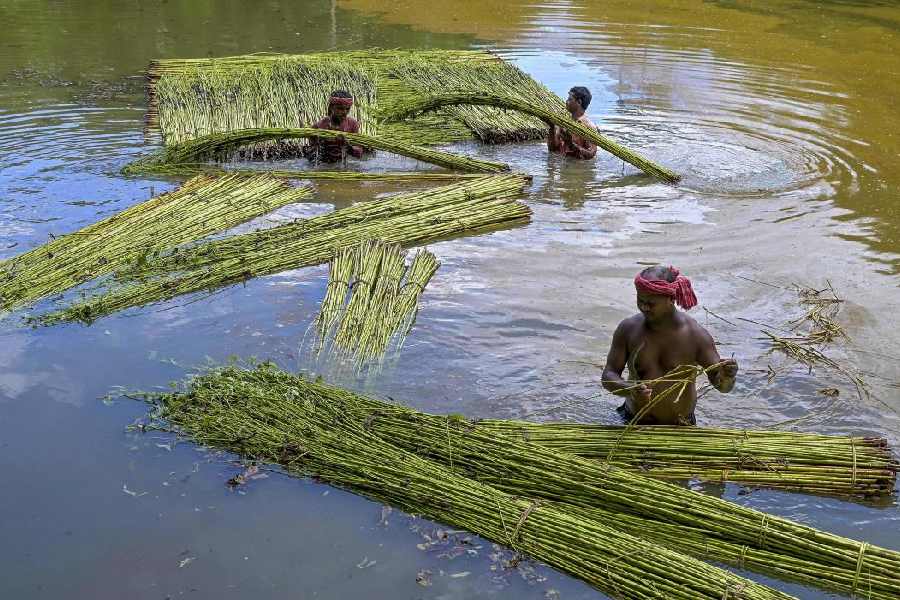Jute farmers in Bengal are concerned over the falling prices of raw jute in 2023. This has prompted an introspection over the prospects of exploring alternative cash crops to the golden fibre in 2024.
Data on average raw jute prices for TD5 grade from the office of the Jute Commissioner of India (JCI) shows a downward trend in 2023, before a correction in November.
At the farmer's level, the price of raw jute was around 12-15 per cent lower than Rs 5,050 per quintal, the minimum support price declared by the central government for crop year 2023-24 which started from July 1, 2023.
This prompted an intervention from the jute commissioner, who issued a notification in October 2023 directing that no buyer and seller should buy or sell at less than Rs 5,050 per quintal at the mokam level and Rs 5,500 per quintal in Calcutta for TD3 grades (equivalent to erstwhile TD5).
"It has not been profitable to cultivate jute this year. We are getting prices in the range of around Rs 4000-4400 per quintal depending on the grade, which is below the minimum support price. After considering the yield and cost of production, there is no gain from farming jute at these prices. Moreover, rainfall has been less this year."
"Next year, we are hoping that raw jute prices would be above support prices," said Rabindranath Pramanik, a jute farmer from Tarakeshwar, Hooghly district of Bengal.
High stocks
For the crop year 2022-23, the total supply including available crops, stock levels and imports was 116 lakh bales (180 kg each). Total demand, which includes mill consumption, domestic consumption and exports, was 93 lakh bales leading to an opening stock level of 23 lakh bales for the 2023-24 season.
As a result, the procurement by mills, with already high stock levels, has been lower than anticipated, leading to further pressure on prices.
With an estimated supply of around 119 lakh bales in 2023-24, the 2024-25 season could begin with an estimated stock of 24 lakh bales, continuing on the trend of pressure on raw jute prices.
The Indian Jute Mills Association has written to Union textile minister Piyush Goyal, flagging off the concerns including violation of mandatory packaging norms by sugar mills, subsidised imports from Bangladesh and Nepal and a slowdown in exports due to the global macroeconomic situation.
"Raw jute harvest has been robust over two consecutive years. Consequently, the price of raw jute has plunged almost 10-12 per cent below MSP levels," the IJMA said in its letter.
Fair price call
Following a meeting with the Union textile secretary in December, the IJMA has suggested that the Jute Corporation of India play a wider role in ensuring fair transactions between balers and farmers.
The association has proposed that the JCI could register the transactions between balers and farmers and issue a fair price certificate to the balers.
"The bumper crop in consecutive years is being singled out as the primary reason for the fall in prices. However, a host of factors ranging from the weakening of government B. Twill demand for continued violation of packaging norms by the sugar industry to subsidised imports are at play. If the latter are addressed, the bumper jute crop would be a boon," the IJMA said in the letter to the JCI.
"Every single farmer must realise MSP in these turbulent times as per the Price Notification Order so that they are not discouraged from raw jute farming in future and also do not fall prey to traders/middlemen," the letter said.










